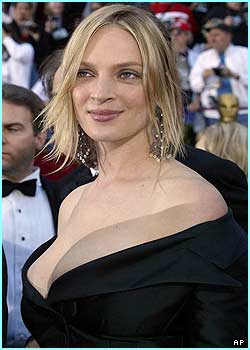Seeing's how I found this story while searching for a picture of a caveman wearing a sling, I am really not in any position to comment on this other contribution from the world of human evolutionary science, so I'll just pass it along:
Breasts Shaped by Evolution for Babies, not MenBreasts Shaped by Evolution for Babies, not Men [breastfeeding.com]
That cute roundness and up-tilt to your breasts evolved to help feed your baby, not attract your mate, say evolutionists....
"The idea came to me from breast feeding my own child when she was an infant," says [Royal Society research fellow at University College in London, Gillian] Bentley.

image: the Uma of Willendorf


ah, chicken & the egg. men were once babies too, and some are still.
This seems just like as silly creation myth. And using terms like "over-eroticize" make me think that we're really into the hard science. This is interesting speculation, but it's hardly a scientific theory.
It's equally as likely that a early human woman with a genetic mutation that caused this breast shape survived a genocide event and went on to pass her genes to the most of humans living today. That it's all simply chance and has just survived because it isn't detrimental to survival.
I think whoever theorized that may not remember that a lot of breasts sag and hang rather flat -- there's no up-tilt in some.
Maybe the shape of our faces was caused by a change in breast shape...
Also, obviously, not all breasts are the same - by far - so not sure really what conclusions she can draw, but a good question to ask.
Hasn't it already been well established smaller breasts produce more milk?